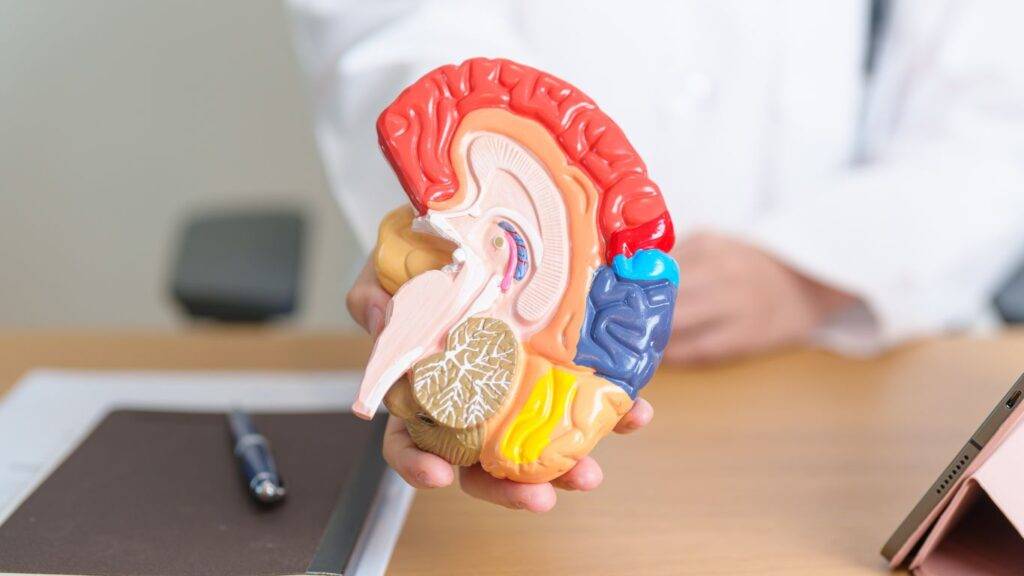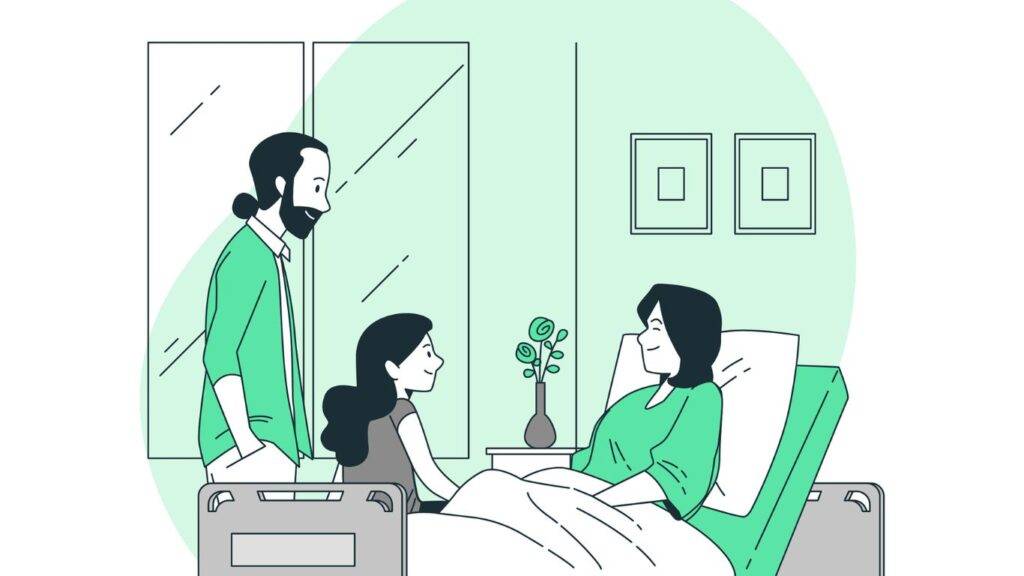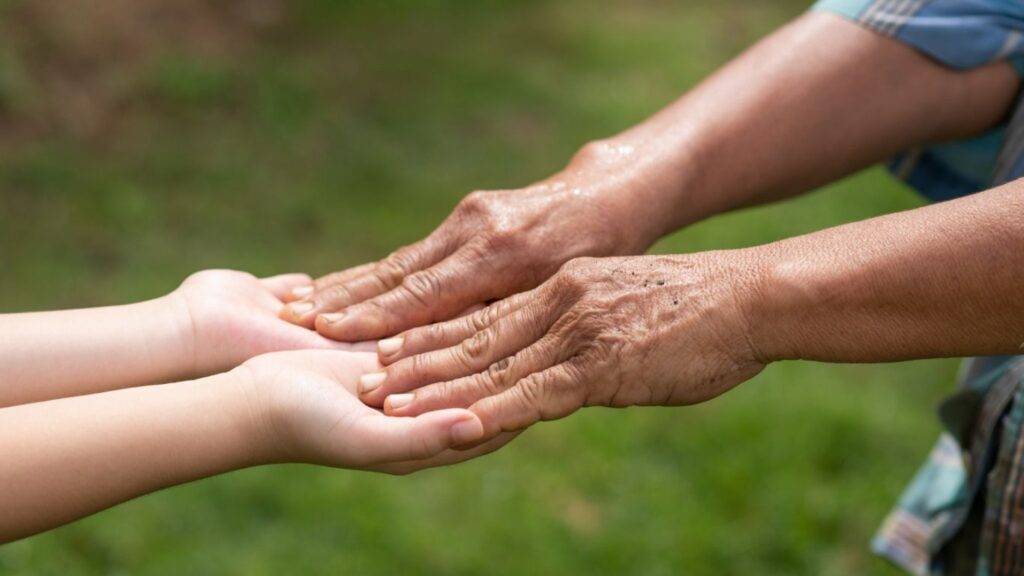Caregiver Support
How to be an Elderly Caregiver

Becoming an elderly caregiver is a profound and rewarding responsibility that requires a unique set of skills, compassion, and dedication. As the aging population continues to grow, the need for caregivers has never been more crucial. In this guide, we will explore the essential aspects of providing care for the elderly, offering insights and practical tips on how to navigate this important role.
Understanding the Role of an Elderly Caregiver
Being an elderly caregiver involves more than just assisting with daily tasks. It requires a deep understanding of the physical, emotional, and social needs of the elderly. Recognize that every senior is unique, and tailoring care to their individual preferences and requirements is key.
Establish Clear Communication
Building a strong foundation of trust begins with effective communication. Listen actively to the senior’s needs, preferences, and concerns. Establish open lines of communication with family members and healthcare professionals involved in the care to ensure a collaborative approach.
Learn about the Aging Process
Familiarize yourself with the physical and mental changes that accompany the aging process. Understanding common health conditions, medications, and potential challenges will equip you to provide more informed and effective care.
Promote Independence
Encourage and support the senior’s independence as much as possible. Identify areas where they can still manage tasks on their own and provide assistance only when needed. This approach helps maintain their dignity and contributes to a sense of autonomy.
Create a Safe and Comfortable Environment
Ensure that the living space is safe and accessible. Remove potential hazards, install necessary aids such as handrails, and make adjustments to accommodate mobility challenges. Creating a comfortable and secure environment contributes to the overall well-being of the elderly individual.
Provide Emotional Support
Being an elderly caregiver involves addressing not only physical needs but also emotional well-being. Be a compassionate listener, offer companionship, and provide reassurance during moments of anxiety or uncertainty. Emotional support is a crucial aspect of holistic caregiving.
Be Flexible and Patient
Flexibility and patience are virtues in caregiving. Understand that the needs of the elderly may change, and adapting to these changes requires a patient and understanding approach. Be prepared for varying moods and fluctuations in health.
Educate Yourself on Medical Needs
While you may not be a healthcare professional, having a basic understanding of common medical conditions and treatments is beneficial. Learn how to administer medications, recognize signs of distress, and respond appropriately in emergencies.
Take Care of Your Well-Being
Caregiving can be demanding, both physically and emotionally. Remember to prioritize your well-being by seeking support when needed, taking breaks, and maintaining a healthy work-life balance. Your ability to provide quality care is closely tied to your health and resilience.
Being an elderly caregiver is a noble and impactful role that requires a combination of empathy, knowledge, and commitment. By approaching the task with an open heart and a willingness to learn, you can make a significant difference in the lives of the elderly individuals under your care. Embrace the journey, celebrate the victories, and find fulfillment in the meaningful connections formed through the act of caregiving.
Exploring the American Caregiver Association: What You Need to Know

In the vast landscape of caregiving, numerous organizations play pivotal roles in supporting caregivers and enhancing the quality of care provided to those in need. One such organization making significant strides is the American Caregiver Association (ACA). In this blog post, we will embark on a journey to explore the American Caregiver Association, shedding light on its purpose, mission, and the valuable resources it offers to caregivers.
The Heart of the American Caregiver Association
At its core, the American Caregiver Association is a non-profit organization dedicated to empowering and supporting caregivers across the nation. With a mission rooted in compassion, the ACA aims to enhance the well-being of both caregivers and care recipients through education, advocacy, and community building.
A Comprehensive Support System
The ACA serves as a comprehensive support system for caregivers by providing access to resources, information, and training. Whether you are a professional caregiver or an individual caring for a loved one, the association strives to equip you with the knowledge and tools needed to navigate the challenges of caregiving effectively.
Educational Initiatives
One of the pillars of the ACA is its commitment to education. The association offers a range of educational initiatives, including online courses, workshops, and informative materials, designed to enhance the skills and knowledge of caregivers. These resources cover various aspects of caregiving, from healthcare practices to emotional well-being.
Advocacy for Caregiver Rights
Beyond education, the American Caregiver Association is actively involved in advocating for the rights of caregivers. The association recognizes the importance of creating a supportive environment that acknowledges the challenges caregivers face and strives to enact positive change at both the local and national levels.
Community Building and Networking
Caregiving can often be an isolating experience. The ACA addresses this by fostering a sense of community among caregivers. Through networking events, forums, and support groups, caregivers can connect, share experiences, and find solace in the understanding and empathy of others facing similar challenges.
Accessible Resources for Diverse Caregiving Needs
The ACA understands that caregiving takes various forms and serves individuals with diverse needs. Whether caring for the elderly, individuals with disabilities, or those with chronic illnesses, the association provides tailored resources to address the unique challenges associated with different caregiving scenarios.
Online Platform for Information and Assistance
In the digital age, the American Caregiver Association leverages technology to reach a broader audience. Its online platform serves as a hub for information, assistance, and community engagement. Caregivers can access a wealth of resources, connect with experts, and find support, all from the comfort of their homes.
As we delve into the realm of caregiving, the American Caregiver Association stands out as a beacon of support and advocacy. By understanding its mission, educational initiatives, and commitment to caregiver rights, we gain insight into an organization dedicated to making a positive impact on the lives of those who dedicate themselves to the care of others. Whether you are a caregiver seeking resources or an advocate for caregiver rights, the American Caregiver Association offers a wealth of support and information to empower you on your caregiving journey.
Connecting Communities: A Closer Look at Social Services in Suffolk County

In the intricate tapestry of Suffolk County, New York, the threads of community support are woven through the fabric of Social Services. This blog aims to provide a comprehensive exploration of the various assistance programs and initiatives that serve as vital connectors, binding communities together in times of need. Join us as we take a closer look at the essential role played by Suffolk County Social Services in fostering a supportive and resilient community.
Overview of Suffolk County Social Services
At the heart of Suffolk County lies a network of social services designed to enhance the well-being of its residents. From financial assistance to healthcare support, these services aim to create a safety net that ensures no one in the community is left behind.
Financial Assistance Programs
Discover the array of financial assistance programs available through Suffolk County Social Services. Whether it’s temporary financial aid, food assistance, or housing support, these programs are designed to address the diverse needs of individuals and families facing economic challenges.
Health and Wellness Initiatives
Delve into the healthcare and wellness initiatives that contribute to the overall health of Suffolk County residents. Learn about access to medical services, mental health support, and public health programs that promote a healthier and more resilient community.
Community Development and Support Services
Explore how Suffolk County Social Services plays a pivotal role in community development. From childcare assistance to employment support, these services contribute to the growth and stability of local neighborhoods.
Navigating the Application Process
Understanding how to access these services is crucial. We’ll guide you through the application process, providing tips and insights to make it a more straightforward and user-friendly experience.
Success Stories and Testimonials
Hear from individuals and families who have benefited from Suffolk County Social Services. Real-life success stories and testimonials shed light on the positive impact these programs have had on the lives of community members.
Community Outreach and Events
Learn about the various outreach initiatives and events organized by Suffolk County Social Services. These efforts foster community engagement, awareness, and collaboration, strengthening the bonds that hold Suffolk County together.
Collaborations with Local Organizations
Explore the collaborative efforts between Suffolk County Social Services and local organizations. These partnerships amplify the impact of community support initiatives, creating a united front against challenges.
Future Directions and Innovations
Stay informed about the future directions and innovative strategies being implemented by Suffolk County Social Services. Discover how the county is adapting to evolving community needs and emerging challenges.
Your Role in Community Support
Conclude the journey by understanding how residents can actively contribute to community support. Whether through volunteering, advocacy, or simply spreading awareness, every member plays a crucial role in strengthening the fabric of Suffolk County.
Suffolk County Social Services serves as the bridge that connects communities, providing essential support and fostering resilience. By understanding the breadth of services available and the impact they have, we can collectively work towards creating a community that thrives, supports, and uplifts every individual within its embrace.
How to Overcome Caregiver Burnout

Caring for a loved one is a noble and rewarding endeavor, but the demands of caregiving can sometimes lead to burnout—a state of physical, emotional, and mental exhaustion. Recognizing the signs of caregiver burnout and taking proactive steps to address it are crucial for both the caregiver’s well-being and the quality of care provided. In this guide, we will explore practical strategies and self-care techniques to help caregivers overcome burnout and find renewed strength in their important role.
Understanding Caregiver Burnout
Caregiver burnout is a state of physical, emotional, and mental exhaustion resulting from the prolonged demands of providing care, often for a family member or loved one. It is characterized by feelings of fatigue, frustration, and a sense of being overwhelmed, and it can impact the caregiver’s overall well-being and ability to provide effective care. Recognizing and addressing caregiver burnout is crucial for maintaining both the caregiver’s health and the quality of care they provide.
Prioritize Self-Care
The most crucial aspect of overcoming caregiver burnout is prioritizing self-care. Acknowledge that taking care of yourself is not a luxury but a necessity. Schedule regular breaks, engage in activities you enjoy, and ensure you get adequate rest. Remember, you cannot pour from an empty cup.
Seek Support
Don’t hesitate to ask for help. Reach out to friends, family members, or support groups to share your feelings and experiences. Establishing a support system can provide emotional relief and practical assistance, helping to lighten the caregiving load.
Set Realistic Expectations
Evaluate and adjust your expectations realistically. Understand that you may not be able to do everything perfectly, and it’s okay to ask for help or delegate tasks. Setting achievable goals can reduce stress and create a more manageable caregiving routine.
Time Management Strategies
Effectively manage your time by creating a schedule that accommodates caregiving responsibilities, personal activities, and moments of relaxation. Prioritize tasks and break them into smaller, more manageable steps to avoid feeling overwhelmed.
Establish Boundaries
Set clear boundaries between your caregiving role and personal life. It’s important to recognize when you need a break and to communicate your limits to others involved in the caregiving process. This allows you to maintain a healthy balance.
Engage in Stress-Relieving Activities
Incorporate stress-relieving activities into your routine, such as exercise, meditation, or hobbies you enjoy. These activities can provide a mental break, promote relaxation, and contribute to overall well-being.
Professional Assistance
Consider seeking professional assistance if the demands of caregiving become too overwhelming. Respite care services, counseling, or therapy can offer valuable support and guidance in managing caregiver stress.
Stay Informed
Educate yourself about the specific health conditions and challenges your loved one is facing. Understanding the situation can empower you to provide more effective care and reduce feelings of uncertainty.
Overcoming caregiver burnout is a continuous process that requires self-awareness, self-compassion, and a commitment to personal well-being. By implementing these strategies and making self-care a priority, caregivers can not only alleviate burnout but also cultivate a sustainable and fulfilling caregiving experience. Remember, you are not alone, and taking care of yourself ultimately enables you to provide the best care for your loved one.
Caregiver Counseling and Support in New York

In the bustling metropolis of New York, where the pace of life is relentless, the role of caregivers often goes unnoticed. However, the challenges faced by those who dedicate themselves to the care of others are immense, and recognizing the need for support is a crucial step towards holistic well-being. This blog post delves into the world of caregiver counseling and support in the vibrant city of New York, shedding light on the invaluable resources available to those who give so much of themselves.
The Unique Challenges of Caregiving in New York
Caregivers in New York City navigate a unique set of challenges. The fast-paced lifestyle, coupled with the high demands of caregiving, can lead to burnout and emotional exhaustion. Balancing the needs of a loved one with the demands of daily life in this dynamic city requires resilience and a strong support system.
The Role of Caregiver Counseling
Caregiver counseling provides a safe and nurturing space for individuals to express their thoughts, fears, and emotions. In New York, various counseling services are tailored to the specific needs of caregivers, offering a range of therapeutic approaches to address the mental and emotional toll of caregiving. These sessions aim to empower caregivers, providing them with coping strategies and tools to navigate the challenges they face.
Support Groups in the City
Caregiver support groups offer a lifeline for those who may feel isolated in their caregiving journey. These groups create a sense of community, allowing caregivers to share experiences, exchange advice, and find solace in the company of others who understand their unique challenges. New York’s diverse population ensures that support groups cater to various cultural and linguistic needs.
Innovative Programs and Workshops
Beyond traditional counseling and support groups, New York City is home to innovative programs and workshops designed to enrich the lives of caregivers. From stress-management workshops to art therapy sessions, these programs recognize the importance of holistic well-being. They provide caregivers with tools to enhance their mental, emotional, and even physical health.
The Importance of Self-Care
Amidst the hustle and bustle of the city, caregivers often neglect their well-being. New York’s caregiver counseling and support services emphasize the importance of self-care, encouraging caregivers to prioritize their mental and emotional health. From mindfulness practices to relaxation techniques, these services empower caregivers to care for themselves as they care for others.
In the city where dreams are born, caregivers play an unsung yet vital role in ensuring the well-being of their loved ones. New York’s caregiver counseling and support services stand as beacons of hope, providing a haven for those who give selflessly. As we celebrate the caregivers of the city, let us also recognize and support the resources available to them, fostering a culture of care and compassion in the heart of New York.
Books to Support Your Caregiving Journey

Embarking on a caregiving journey is a deeply personal and often challenging experience. As caregivers navigate the complexities of their roles, finding solace and guidance in the pages of a book can be a powerful source of support. In this blog post, we explore a curated list of books designed to inspire, inform, and provide comfort to those on the noble path of caregiving.
“The Caregiver’s Survival Guide”
This practical guide offers invaluable advice on navigating the challenges of caregiving. Author and caregiving expert, Dr. Julia Mayer, provides actionable tips, coping strategies, and resources to help caregivers manage stress and maintain their well-being.
“Being Mortal: Medicine and What Matters in the End” by Atul Gawande
Atul Gawande, a prominent surgeon and writer, delves into the intricacies of end-of-life care. “Being Mortal” is a thought-provoking exploration of how medical professionals and caregivers can better understand and meet the needs of those facing serious illnesses.
“The 36-Hour Day: A Family Guide to Caring for People Who Have Alzheimer’s Disease, Related Dementias, and Memory Loss” by Nancy L. Mace and Peter V. Rabins
A seminal work in caregiving literature, this book provides practical advice for those caring for individuals with dementia. With empathy and expertise, the authors guide caregivers through the unique challenges posed by memory loss and cognitive decline.
“A Bittersweet Season: Caring for Our Aging Parents—and Ourselves” by Jane Gross
Journalist Jane Gross shares her journey of caring for her aging mother in this candid and insightful memoir. “A Bittersweet Season” offers a relatable exploration of the emotional and logistical challenges that arise when caring for elderly parents.
“The Inspired Caregiver: Finding Joy While Caring for Those You Love” by Peggi Speers and Tia Walker
This uplifting book encourages caregivers to find joy and fulfillment in their roles. Through a combination of personal stories, practical advice, and inspirational quotes, the authors guide caregivers toward a more positive and empowered caregiving experience.
“Chicken Soup for the Caregiver’s Soul: Stories to Inspire Caregivers in the Home, the Community, and the World” by Jack Canfield, Mark Victor Hansen, and LeAnn Thieman
The beloved “Chicken Soup” series extends its warmth to caregivers, offering a collection of heartwarming stories that celebrate the resilience, compassion, and love inherent in caregiving.
The caregiving journey is a profound and transformative experience, and these books serve as literary companions to those who walk this path. Whether seeking practical advice, emotional support, or a sense of connection with others facing similar challenges, these reads offer wisdom, comfort, and inspiration. As you navigate the twists and turns of caregiving, may these books become trusted allies on your journey, providing solace and understanding in every chapter of your story.
Responsibilities of CDPAP Caregivers

The Consumer Directed Personal Assistance Program (CDPAP) stands as a beacon of empowerment in the realm of caregiving, offering individuals the freedom to choose their caregivers and direct their care plans. In this blog post, we delve into the essential responsibilities shouldered by CDPAP caregivers. From fostering independence to ensuring the well-being of those in their care, CDPAP caregivers play a pivotal role in creating a supportive environment.
Personalized Care Plans
CDPAP caregivers are entrusted with implementing personalized care plans tailored to the unique needs and preferences of the care recipient. This includes understanding the individual’s health condition, mobility levels, and any specific requirements associated with their care.
Assistance with Activities of Daily Living (ADLs)
Caregivers under CDPAP are responsible for assisting with Activities of Daily Living (ADLs) such as bathing, dressing, grooming, and mobility support. This aspect of care is crucial in promoting the overall well-being and dignity of the individual.
Medication Management
CDPAP caregivers often take on the responsibility of managing medications. This involves administering prescribed medications at scheduled times, keeping track of dosages, and communicating with healthcare professionals to ensure the proper medication routine is followed.
Health Monitoring
Regular health monitoring is a key responsibility for CDPAP caregivers. They observe and document any changes in the individual’s health, report concerns to healthcare professionals, and collaborate with the care recipient to address emerging health needs.
Assistance with Mobility and Exercises
For individuals with mobility challenges, CDPAP caregivers provide crucial assistance. This includes aiding in transfers, accompanying individuals during walks or exercises, and implementing any prescribed mobility routines to maintain or enhance physical well-being.
Household Support
Caregivers often assist with light housekeeping tasks, ensuring a safe and comfortable living environment for the care recipient. This may include meal preparation, laundry, and maintaining cleanliness in shared spaces.
Communication and Collaboration
Effective communication is vital in CDPAP caregiving. Caregivers need to maintain open lines of communication with the care recipient, family members, and healthcare professionals. Collaborating with the care recipient to make decisions about their care plan is a fundamental aspect of the role.
Emotional Support and Companionship
Beyond the physical aspects of care, CDPAP caregivers provide emotional support and companionship. This involves actively listening to the care recipient, offering encouragement, and fostering a positive and empathetic environment.
Documentation and Record-Keeping
Caregivers are responsible for maintaining accurate records of the care provided. This includes documenting any changes in the individual’s health, adherence to medication schedules, and other relevant information that contributes to the overall care plan.
Continuing Education and Training
CDPAP caregivers engage in ongoing education and training to stay informed about best practices in caregiving, updates in healthcare protocols, and any specific requirements related to the individual’s health condition.
The responsibilities shouldered by CDPAP caregivers extend far beyond the conventional caregiving model. In empowering individuals to take control of their care, caregivers become vital partners in enhancing the quality of life for those under their charge. Through their dedication, compassion, and adherence to personalized care plans, CDPAP caregivers embody a transformative approach to caregiving that prioritizes individual choice and autonomy.
CDPAP Caregivers' Guides on Pneumonia in the Elderly

In the realm of caregiving, knowledge is not just power; it’s a lifeline. CDPAP (Consumer Directed Personal Assistance Program) caregivers, the unsung heroes in the lives of many seniors, play a pivotal role in ensuring the well-being of the elderly. One crucial aspect of their responsibility is understanding and managing pneumonia in the elderly. In this comprehensive blog post, we’ll delve into the intricacies of pneumonia, exploring the invaluable resources and guides available to CDPAP caregivers.
Understanding Pneumonia in the Elderly
Pneumonia, a respiratory infection, can be particularly challenging for the elderly. As the immune system weakens with age, seniors become more susceptible to infections, making pneumonia a serious concern. CDPAP caregivers, equipped with knowledge about the causes, symptoms, and risk factors associated with elderly pneumonia, become frontline advocates in promoting respiratory health.
The Role of CDPAP Caregivers
CDPAP caregivers, being the primary support system for the elderly, shoulder the responsibility of creating a safe and nurturing environment. By understanding the nuances of pneumonia, caregivers can proactively address risk factors, encourage preventive measures, and recognize early warning signs. This proactive approach significantly contributes to the overall well-being of their elderly charges.
Resources for CDPAP Caregivers:
Educational Workshops and Seminars
Many organizations offer workshops and seminars specifically tailored for CDPAP caregivers. These events cover a spectrum of topics related to elderly care, with a dedicated focus on pneumonia. Caregivers gain insights into the latest research, treatment options, and best practices for managing pneumonia in the elderly.
Online Training Modules
In the digital age, online resources play a crucial role in disseminating information. Various platforms provide CDPAP caregivers with access to interactive training modules, enabling them to learn at their own pace. These modules often include real-life scenarios, ensuring that caregivers are well-prepared for the challenges they may encounter.
Printed Guides and Manuals
Written guides and manuals serve as tangible resources that caregivers can refer to repeatedly. These materials cover everything from the basics of pneumonia to advanced caregiving techniques. Having a physical reference allows caregivers to reinforce their knowledge and share information with other members of the caregiving team.
Support Networks and Forums
The journey of a CDPAP caregiver can be emotionally demanding. Being part of support networks and online forums creates a sense of community. Caregivers can share experiences, seek advice, and gain valuable insights from others who have faced similar challenges, fostering a supportive ecosystem.
Challenges and Solutions
While CDPAP caregivers are armed with knowledge and resources, challenges in managing pneumonia in the elderly can still arise. Adequate communication with healthcare professionals, regular health checkups, and continuous learning are essential components of overcoming these challenges. Recognizing the signs of pneumonia early on and implementing preventive measures are critical in providing effective care.
In the realm of caregiving, where every action has a profound impact on the lives of the elderly, CDPAP caregivers stand as beacons of compassion and knowledge. By embracing the comprehensive guides and resources available to them, these caregivers become not only guardians of physical health but also champions of overall well-being. As the landscape of elderly care evolves, the commitment of CDPAP caregivers to staying informed and educated becomes increasingly vital, ensuring a future where seniors can age gracefully and with dignity.
A Caregiver's Guide to Manage Asthma in the Elderly

Caring for an elderly individual with asthma requires a combination of empathy, knowledge, and proactive measures. As a caregiver, your role is not just about providing physical assistance but also understanding the unique challenges that come with managing asthma in the elderly. This guide aims to equip caregivers with the necessary information and strategies to ensure optimal care and improve the quality of life for seniors living with asthma.
Understanding Asthma in the Elderly
Asthma, a chronic respiratory condition, can manifest differently in older adults compared to younger individuals. It is crucial for caregivers to comprehend the nuances of asthma in the elderly, as symptoms may be subtle or mistaken for other age-related health issues. Respiratory function tends to decline with age, making seniors more susceptible to respiratory conditions like asthma.
Key Considerations for Caregivers:
Educate Yourself
Take the time to educate yourself about asthma, its triggers, and common medications. Understanding the basics of asthma will enable you to communicate effectively with healthcare professionals and respond promptly to any changes in the elderly individual’s condition.
Create an Asthma Action Plan
Work with the senior’s healthcare team to develop a personalized asthma action plan. This plan should include information about medications, triggers to avoid, and steps to take in case of an asthma attack. Regularly review and update this plan as needed.
Monitor Symptoms
Keep a close eye on the elderly person’s respiratory symptoms. Be observant of any changes in breathing patterns, coughing, or wheezing. Regular monitoring allows for early intervention and prevents potential complications.
Environmental Modifications
Identify and minimize asthma triggers in the home environment. This may include reducing exposure to allergens, maintaining proper ventilation, and ensuring a clean living space. Creating an asthma-friendly environment is vital for managing the condition effectively.
Medication Management
Ensure that the senior takes prescribed medications as directed. Familiarize yourself with the proper use of inhalers and other devices, and assist as needed. Keep track of medication schedules and refills to avoid interruptions in treatment.
Encourage a Healthy Lifestyle
Promote a healthy lifestyle that includes regular exercise, a balanced diet, and proper hydration. However, be mindful of the senior’s physical limitations and consult with healthcare professionals to determine suitable activities.
Open Communication with Healthcare Providers
Maintain open lines of communication with the elderly person’s healthcare team. Share any observations or concerns promptly, and attend medical appointments to stay informed about the senior’s overall health and asthma management.
Caring for an elderly individual with asthma requires a holistic and compassionate approach. By being proactive, informed, and attentive, caregivers can significantly contribute to the well-being of seniors living with asthma. Remember, the key to effective caregiving lies in understanding the individual needs of the elderly person and collaborating closely with healthcare professionals to provide comprehensive care that enhances their quality of life.
Comprehensive Guide for CDPAP Caregivers for Preventing Heart Attacks

As caregivers within the Consumer Directed Personal Assistance Program (CDPAP), your dedication to the well-being of your clients goes beyond basic care tasks. One critical aspect of caregiving involves understanding and actively preventing potential health risks, including the threat of heart attacks. This comprehensive guide is designed to equip CDPAP caregivers with essential knowledge and strategies to effectively contribute to heart attack prevention in the individuals they care for.
Understanding Heart Attack Risk Factors:
Age and Gender Considerations
Recognize that the risk of heart attacks increases with age, and both men and women are susceptible. Understanding the unique risk factors of each individual under your care is crucial in developing personalized prevention strategies.
Medical History Assessment
Conduct a thorough assessment of the individual’s medical history, paying special attention to factors such as hypertension, diabetes, high cholesterol, and family history of heart disease. Awareness of these factors is vital for proactive prevention.
Lifestyle Choices
Evaluate lifestyle choices that may contribute to heart health, including diet, exercise, smoking habits, and alcohol consumption. Collaborate with the individual to make positive adjustments to their lifestyle, promoting overall cardiovascular health.
Preventive Measures for CDPAP Caregivers:
Educate on Healthy Eating
Work with healthcare professionals to develop heart-healthy meal plans. Encourage a balanced diet rich in fruits, vegetables, whole grains, and lean proteins. Monitor and assist with meal preparation to ensure nutritional goals are met.
Promote Physical Activity
Develop a tailored exercise plan in consultation with healthcare providers. Incorporate activities suitable for the individual’s physical capabilities, ensuring regular movement to enhance cardiovascular health. Encourage walks, gentle exercises, or activities prescribed by healthcare professionals.
Medication Management
Ensure the individual takes prescribed medications as directed. Monitor medication adherence and communicate any concerns to healthcare providers. Understand the purpose of each medication and its role in preventing heart-related complications.
Stress Management Techniques
Recognize the impact of stress on heart health and introduce stress management techniques such as relaxation exercises, mindfulness, or engaging in enjoyable activities. A holistic approach to well-being contributes to overall heart health.
Regular Health Checkups
Advocate for regular health checkups to monitor key indicators such as blood pressure, cholesterol levels, and glucose levels. Regular screenings allow for early detection of potential risk factors and timely intervention.
Emergency Preparedness
Equip yourself with knowledge about the signs and symptoms of a heart attack. Develop an emergency action plan, including steps to take in case of a cardiac event. Ensure that emergency contact information is readily available.
As a CDPAP caregiver, your role extends beyond the physical tasks of caregiving. By actively participating in heart attack prevention strategies, you contribute significantly to the overall well-being of those under your care. Empower yourself with knowledge, collaborate closely with healthcare professionals, and engage in open communication with the individuals you care for. Through a proactive and holistic approach, you play a pivotal role in enhancing cardiovascular health and fostering a better quality of life for those in your care.
Strength in Numbers: The Power of Caregiver Support Networks

Amid this caregiving experience, the importance of a robust support system cannot be overstated. In this blog, we’ll explore the transformative power of caregiver support networks, emphasizing how the strength found in shared experiences and empathetic connections can make a significant difference in the lives of those providing care.
Understanding the Isolation of Caregiving
Caregiving can be an isolating experience. Often, caregivers find themselves immersed in a role that demands time, energy, and emotional resources, potentially leading to feelings of loneliness and isolation. A caregiver support network serves as a vital antidote to this isolation, creating a community where individuals can share their challenges, victories, and emotions without judgment.
Empathy in Shared Experiences
The unique challenges faced by caregivers are best understood by those walking a similar path. Caregiver support networks bring together individuals who share common experiences, fostering a sense of empathy and understanding that goes beyond what can be found in general social circles. This shared empathy becomes a source of strength and comfort.
Practical Advice and Tips
Within caregiver support networks, members often exchange practical advice and tips based on their own experiences. Whether it’s navigating healthcare systems, managing daily routines, or coping with emotional stress, the collective wisdom of the group can provide invaluable insights that may not be readily available elsewhere.
Emotional Support and Validation
Caregivers often grapple with a range of emotions, from guilt to exhaustion to frustration. In a support network, individuals can openly express their feelings without fear of judgment. The act of sharing, listening, and validating each other’s emotions creates a therapeutic environment that contributes to emotional well-being.
Reducing Burnout Through Shared Responsibility
Caregiver burnout is a real concern, and support networks play a crucial role in alleviating this burden. By sharing responsibilities, resources, and caregiving duties, members of a support network help distribute the load, preventing burnout and ensuring that caregivers can sustain their commitment over the long term.
Access to Resources and Information
Caregiver support networks often serve as valuable hubs of information, connecting members with resources, services, and professionals who can assist in various aspects of caregiving. From legal advice to medical information, these networks empower caregivers with the knowledge they need to make informed decisions.
Building Lasting Friendships
Beyond the practical aspects, caregiver support networks have the potential to foster genuine friendships. The bonds formed within these groups often extend beyond the realm of caregiving, creating lasting connections that provide ongoing support even as circumstances evolve.
In the realm of caregiving, the phrase “strength in numbers” takes on a profound meaning. Caregiver support networks stand as beacons of understanding, empathy, and practical assistance, offering a lifeline to those navigating the complexities of caring for a loved one. As caregivers come together, sharing their strengths, experiences, and resilience, they not only find solace in the journey but also contribute to a collective strength that transcends individual challenges. If you’re a caregiver, consider exploring or forming a support network—because, indeed, strength in numbers can make all the difference in the world of caregiving.
Caregiving in the Face of Cancer: Finding Strength in Support

The journey of caregiving is a profound and often challenging experience, especially when cancer becomes a part of the equation. As caregivers navigate the complexities of providing care and emotional support, the importance of finding strength in a support network cannot be overstated. In this blog, we delve into the world of caregiving in the face of cancer, exploring the transformative power of support and the role it plays in the Consumer Directed Personal Assistance Program (CDPAP) homecare.
The Unique Challenges of Caregiving for Cancer Patients
Caring for someone with cancer introduces a unique set of challenges. The physical and emotional toll on both the patient and the caregiver can be overwhelming. From managing treatment schedules to providing emotional support, the caregiver’s role is multifaceted and often demanding.
The Power of Emotional Support:
A Shoulder to Lean On
Emotional support is a cornerstone of caregiving. Having a support system allows caregivers to express their feelings, fears, and hopes without judgment. Whether through friends, family, or support groups, a listening ear can make a world of difference.
Cancer Support Communities
Engaging with cancer support communities provides caregivers with a space to connect with others facing similar challenges. Shared experiences create a sense of understanding and empathy, offering comfort and validation during difficult times.
The Role of CDPAP Homecare in Cancer Care:
Flexible Care Options
CDPAP empowers individuals to choose their caregivers, often family or friends. This flexibility allows caregivers to provide personalized care tailored to the specific needs of the cancer patient, fostering a more comfortable and supportive environment.
Enhanced Emotional Connection
The close relationship between the caregiver and the care recipient in CDPAP homecare can strengthen emotional bonds. This connection becomes a source of comfort and reassurance for individuals facing the challenges of cancer treatment.
Building Resilience Through Support:
Practical Assistance
Support networks not only offer emotional solace but also practical assistance. From meal preparation to running errands, the collective effort of a support system can ease the daily burdens of caregiving.
Counseling and Resources
Many cancer support groups provide access to counseling services and valuable resources. Caregivers can benefit from professional guidance, coping strategies, and educational materials to navigate the complexities of cancer care.
Navigating the Journey Together:
Celebrating Small Victories
In the face of cancer, caregivers and patients alike celebrate small victories. Whether it’s completing a treatment cycle or achieving a personal milestone, acknowledging these triumphs together strengthens the bond between the caregiver and the care recipient.
Acknowledging Caregiver Well-being
Recognizing caregiver well-being is crucial. Support networks emphasize the importance of self-care, encouraging caregivers to prioritize their physical and mental health to sustain the caregiving journey.
Caregiving in the face of cancer is a journey marked by resilience, compassion, and strength. The role of support networks, coupled with the flexibility and personalized care offered by CDPAP homecare, creates a holistic caregiving environment. For those navigating the complexities of cancer care, finding strength in support becomes not only a source of solace but a transformative force that empowers caregivers to face each day with courage and hope.
A Guide to Caring for Seniors with Muscle Weakness

Caring for seniors with muscle weakness requires a thoughtful and holistic approach. As a Consumer Directed Personal Assistance Program (CDPAP) caregiver, your role is crucial in enhancing the well-being and quality of life for elderly individuals facing these challenges. This guide aims to provide you with valuable insights, practical tips, and resources to navigate the complexities of caring for seniors with muscle weakness.
Understanding Muscle Weakness
Muscle weakness can result from various factors such as aging, medical conditions, or a sedentary lifestyle. It often leads to decreased mobility, increased vulnerability to falls, and a diminished overall quality of life. As a CDPAP caregiver, it’s essential to comprehend the unique needs of seniors with muscle weakness to tailor your care accordingly.
Creating a Safe and Accessible Environment
- Home Modifications:Evaluate the living space to identify potential hazards. Make necessary modifications such as installing grab bars, non-slip mats, and ramps to ensure a safe environment.
- Adaptive Equipment:Introduce adaptive equipment like walkers, canes, or wheelchairs to enhance mobility. Ensure that these tools are properly adjusted and maintained.
Personalized Care Plan
- Communication:Establish open communication with the care recipient and their family. Understand their specific needs, preferences, and any medical considerations that may impact your caregiving approach.
- Collaboration with Healthcare Professionals:Work closely with healthcare providers to stay informed about the senior’s medical condition, medications, and any changes in their health status.
Mobility and Exercise
- Gentle Exercise Programs:Collaborate with healthcare professionals to develop a tailored exercise routine that focuses on improving strength, flexibility, and balance. Encourage the senior to engage in regular, low-impact exercises.
- Assistive Techniques:Learn and employ techniques that aid in safe transfers, such as using proper body mechanics and assistive devices.
Emotional Support
- Empathy and Compassion:Acknowledge the emotional challenges that come with muscle weakness. Offer emotional support and encouragement to boost the senior’s mental well-being.
- Social Engagement:Facilitate social activities and connections to prevent feelings of isolation. Whether it’s arranging visits from friends or organizing social events, fostering a sense of community is vital.
Caregiver Self-Care
- Respite Care:Take advantage of respite care services to ensure you have time for self-care and rejuvenation. Caring for yourself is essential to provide the best care for your senior loved one.
- Education and Training:Stay informed about muscle weakness conditions and caregiving techniques. Attend relevant workshops or training sessions to enhance your skills and knowledge.
Caring for seniors with muscle weakness as a CDPAP caregiver requires a combination of empathy, adaptability, and a commitment to personalized care. By understanding the unique needs of each individual and implementing the strategies outlined in this guide, you can contribute significantly to improving the overall well-being of the seniors under your care. Remember, your dedication makes a meaningful difference in their lives.
How to Overcome Caregivers' Daily Problems

Caregiving is a profoundly rewarding yet challenging responsibility that comes with its own set of daily hurdles. From emotional stress to logistical challenges, caregivers face a multitude of issues. This blog aims to provide practical solutions to help caregivers overcome these obstacles and enhance their caregiving experience.
Time Management: Mastering the Art of Prioritization
One common challenge for caregivers is time management. Balancing the needs of the care recipient with personal and professional responsibilities can be overwhelming. To overcome this, consider:
- Create a Schedule: Develop a daily or weekly schedule that allocates time for essential tasks. Prioritize critical activities and set realistic expectations for what can be achieved in a given timeframe.
- Delegate When Possible: Don’t hesitate to seek help from family members, friends, or hired caregivers. Delegating tasks can alleviate the workload and provide you with much-needed support.
Emotional Exhaustion: Self-Care as a Priority
Caregivers often face emotional exhaustion, dealing with the challenges of witnessing a loved one’s health decline. Overcoming emotional fatigue involves:
- Regular Self-Care: Dedicate time for self-care activities that bring joy and relaxation. This can include reading, exercise, meditation, or pursuing hobbies. Taking care of yourself is crucial for maintaining the mental and emotional stamina needed for caregiving.
- Seeking Emotional Support: Don’t hesitate to share your feelings with friends, family, or a support group. Talking about your experiences can provide emotional relief and connect you with others who understand your journey.
Communication Breakdowns: Foster Open Dialogues
Effective communication is vital for successful caregiving. If you’re facing challenges in this area, consider:
- Regular Family Meetings: Establish regular family meetings to discuss care plans, share updates, and address concerns. Clear communication helps ensure everyone involved is on the same page regarding the care recipient’s needs.
- Utilize Technology: Leverage communication tools like messaging apps or shared calendars to coordinate with other family members or healthcare professionals. Technology can streamline information sharing and facilitate collaboration.
Financial Strain: Exploring Resources and Assistance
Financial challenges are a common concern for caregivers. To alleviate this burden:
- Research Financial Assistance Programs: Explore government programs, nonprofit organizations, or local resources that provide financial assistance to caregivers. These programs can offer support with expenses related to caregiving.
- Financial Planning: Consult with a financial advisor to create a budget and explore long-term financial planning options. Understanding your financial situation and planning can help ease financial stress.
Caregivers face a myriad of daily challenges, but with proactive strategies and a supportive mindset, these obstacles can be overcome. By prioritizing time management, practicing self-care, fostering open communication, and exploring available resources, caregivers can navigate their journey more smoothly. Remember, acknowledging and addressing these challenges is a crucial step toward creating a more sustainable and fulfilling caregiving experience.
Strength in Unity: Joining a Brain Injury Caregiver Support Network

Caring for a loved one with a brain injury is a journey that comes with unique challenges. In times of uncertainty and stress, finding a supportive community becomes invaluable. This blog delves into the practical aspects of joining a Brain Injury Caregiver Support Network, exploring the strength that unity can provide in navigating the complexities of caregiving.
Understanding the Impact of Brain Injury
Brain injuries can have diverse effects, ranging from cognitive impairments to physical challenges. Caregivers often find solace in connecting with others who share similar experiences. A support network offers a space to exchange insights, coping strategies, and emotional support.
Access to Information and Resources
Being part of a caregiver support network opens doors to a wealth of information and resources. Fellow caregivers can provide practical advice on medical options, rehabilitation programs, and legal considerations. This shared knowledge can empower caregivers with the tools needed to make informed decisions.
Emotional Support and Compassion
Caregiving for someone with a brain injury can be emotionally draining. Joining a support network creates an environment where caregivers can express their feelings without judgment. The empathy and understanding found within the community offer a vital outlet for emotional support.
Practical Tips for Daily Challenges
Caregivers often face daily challenges, from managing medications to addressing communication barriers. In a support network, caregivers can share practical tips and techniques that have proven effective in their caregiving journey. This exchange of hands-on knowledge fosters a sense of community expertise.
Advocacy and Empowerment
A unified voice can be a powerful advocate for change. Caregiver support networks often engage in advocacy efforts, raising awareness about the needs of brain injury caregivers and pushing for improved resources and services. Joining such initiatives empowers caregivers to make a positive impact on a broader scale.
Building Lifelong Connections
The bonds formed within a caregiver support network often extend beyond the realm of caregiving. Lifelong connections are built, creating a network of individuals who truly understand the complexities of each other’s journeys. These connections provide a lasting source of encouragement and companionship.
Finding Local Support
Many caregiver support networks operate on both local and virtual levels. Locally-based networks can offer additional benefits, such as in-person meetings, local resources, and opportunities for face-to-face connections. Exploring both virtual and local options ensures a well-rounded support system.
Joining a Brain Injury Caregiver Support Network is a proactive step toward strength, resilience, and a more informed caregiving experience. In unity, caregivers find the understanding, support, and resources needed to navigate the challenges of caring for a loved one with a brain injury. Remember, you are not alone—strength is found in unity, and together, caregivers can make a significant impact on the well-being of those they care for and their own.
Understanding and Addressing Caregiver Stress: A Practical Guide

Caring for a loved one is a noble and rewarding responsibility, but it often comes with its share of challenges, including caregiver stress. This blog delves into the dynamics of caregiver stress, offering insights into its various facets and providing practical strategies to address and mitigate its impact.
Recognizing the Signs of Caregiver Stress:
Caregiver stress can manifest in various ways, including emotional exhaustion, physical fatigue, and mood changes. Caregivers must recognize these signs early on. Common indicators include:
- Sleep disturbances
- Feeling overwhelmed or irritable
- Changes in appetite
- Persistent fatigue
Understanding the Causes of Caregiver Stress:
Identifying the root causes of stress is essential for effective coping. Common sources of caregiver stress include:
- Demands of caregiving tasks
- Balancing work, family, and caregiving responsibilities
- Financial strain
- Concerns about the health and well-being of the care recipient
Practical Strategies:
- Prioritize Self-Care: Caregivers often neglect their well-being. Prioritize self-care activities, such as exercise, adequate sleep, and relaxation techniques, to replenish your physical and emotional reserves.
- Seek Support: Establish a support system, including family, friends, or a caregiver support group. Sharing your experiences and concerns can provide emotional relief and valuable insights.
- Set Realistic Expectations: Accept that you cannot do everything perfectly. Set realistic expectations for yourself and acknowledge that it’s okay to ask for help.
- Take Breaks: Schedule regular breaks to recharge. Whether it’s a short walk, a moment of meditation, or pursuing a hobby, these breaks are essential for maintaining mental well-being.
Utilizing Respite Care:
- Respite care provides temporary relief for caregivers, allowing them to take a break and focus on their own needs. Explore respite care options through local agencies, community services, or support organizations.
Professional Counseling and Support:
- Seeking professional counseling can be beneficial for caregivers dealing with chronic stress. Therapists can provide coping strategies, emotional support, and a safe space to discuss challenges.
Planning for the Future:
- Long-term caregiving requires careful planning. Consider discussing and documenting the care recipient’s wishes, exploring financial options, and creating a support network that can step in when needed.
Understanding and addressing caregiver stress is essential for the well-being of both the caregiver and the care recipient. By recognizing the signs, identifying stressors, and implementing practical coping strategies, caregivers can navigate their roles more effectively and sustainably. Remember, prioritizing your well-being is not a luxury but a necessity, ensuring you can provide the best possible care to your loved one while maintaining your health and resilience.
Practical Tips for Caregiving for Loved Ones with Brain Injuries

Caring for a loved one with a brain injury is a journey that demands both resilience and compassion. As a caregiver, you play a vital role in providing support and fostering recovery. This blog offers practical tips to guide you through the challenges of caregiving for individuals with brain injuries, aiming to enhance both your loved one’s well-being and your peace of mind.
Educate Yourself about Brain Injuries
Begin by gaining a comprehensive understanding of the specific type of brain injury your loved one has sustained. This knowledge will empower you to anticipate challenges, communicate effectively with healthcare professionals, and make informed decisions about their care.
Establish Open Communication
Maintain transparent and open communication channels with both your loved one and their healthcare team. Regular updates and discussions about their condition, treatment plans, and progress can help everyone involved stay on the same page.
Create a Structured Routine
Establishing a consistent daily routine can provide a sense of stability for individuals with brain injuries. This structure aids in reducing anxiety and confusion while helping them adapt to new circumstances.
Prioritize Safety Measures
Brain injury survivors may face challenges related to balance and coordination. Ensure the home environment is adapted for safety by removing tripping hazards, installing handrails, and using non-slip mats in key areas.
Encourage Independence within Limits
While safety is paramount, it’s crucial to encourage independence within the limits of your loved one’s capabilities. Foster a sense of autonomy by involving them in decision-making and daily activities that align with their abilities.
Implement Memory Aids
Cognitive challenges are common after a brain injury. Use memory aids such as calendars, reminders, and labeled items to assist with daily tasks and appointments. These aids help mitigate memory lapses and improve overall organization.
Practice Patience and Understanding
Emotional and behavioral changes are common in individuals with brain injuries. Cultivate patience and understanding, recognizing that these changes are often a result of the injury. Seek support from mental health professionals if needed.
Utilize Support Services
Explore support services within your community, such as local brain injury support groups, respite care, and counseling services. These resources provide not only practical assistance but also emotional support for caregivers.
Monitor and Manage Medications
Keep a detailed record of medications, dosage schedules, and potential side effects. Regularly communicate with healthcare providers to ensure optimal medication management and address any concerns promptly.
Take Care of Yourself
The role of a caregiver can be emotionally and physically demanding. Prioritize self-care to maintain your well-being. Seek respite care when needed, engage in activities you enjoy, and consider joining caregiver support groups to connect with others facing similar challenges.
Caregiving for loved ones with brain injuries requires a multifaceted approach that encompasses knowledge, communication, safety, and emotional support. By incorporating these practical tips into your caregiving routine, you can contribute to the well-being and recovery of your loved one while ensuring that you, as a caregiver, remain resilient and compassionate throughout the journey. Remember, your role is invaluable, and with the right strategies, you can provide the support needed for your loved one’s continued progress.
Addressing and Managing Sundown Syndrome

Caring for a loved one can be both rewarding and challenging, especially when faced with conditions like Sundown Syndrome. This phenomenon, characterized by increased agitation and confusion in the late afternoon and evening, is not uncommon among individuals receiving home care through programs like CDPAP. In this guide, we’ll explore practical strategies and insights to help caregivers effectively address and manage Sundown Syndrome.
Understanding Sundown Syndrome
Sundown Syndrome, also known as “sundowning,” is a term used to describe increased behavioral challenges, such as confusion, anxiety, and restlessness, that often occur later in the day. While the exact cause is not fully understood, factors like fatigue, changes in lighting, and disruptions to the circadian rhythm may contribute to its onset.
Practical Tips for Caregivers:
Establish a Consistent Routine
Maintaining a regular daily schedule can provide a sense of predictability for individuals with Sundown Syndrome. Consistency in meal times, activities, and bedtime routines can help regulate their internal clock.
Optimize Lighting Conditions
Ensure that the home is well-lit during the day to support a healthy circadian rhythm. In the evening, gradually dim the lights to signal that it’s time to wind down. Consider using nightlights in the bedroom and hallways to prevent disorientation during the night.
Encourage Physical Activity
Engaging in light physical activities during the day can help reduce restlessness and improve sleep quality. Incorporate exercises such as short walks or gentle stretches into the daily routine.
Monitor Diet and Hydration
Be mindful of the timing and content of meals. Avoid caffeinated beverages and heavy meals close to bedtime. Adequate hydration is essential but limit fluids close to bedtime to reduce the likelihood of nighttime bathroom trips.
Create a Calming Environment
Designate a quiet and relaxing space for evening activities. Minimize noise, limit screen time before bedtime, and consider soothing activities such as listening to calming music or reading.
Stay Connected to Emotional Needs
Sundown Syndrome can be emotionally challenging for both the individual and the caregiver. Be patient, compassionate, and attentive to their emotional needs. Offer reassurance and comfort during moments of confusion or anxiety.
Consult with Healthcare Professionals
If Sundown Syndrome persists or worsens, consult with the individual’s healthcare team. They can provide insights into potential medical or medication-related factors and offer guidance on additional strategies for management.
Addressing and managing Sundown Syndrome requires a multifaceted approach that combines routine, environmental adjustments, and emotional support. As a caregiver, your dedication and proactive efforts play a crucial role in enhancing the well-being of your loved one. By incorporating these practical tips into your caregiving routine, you can create a more supportive and comforting environment for individuals experiencing Sundown Syndrome. Remember, each person is unique, so tailor these strategies to fit the individual needs and preferences of those in your care.
Empathy in Action: The Vital Role of a Brain Injury Caregiver

Caring for a loved one with a brain injury is a journey that requires not just skill but an abundance of empathy. The role of a brain injury caregiver goes beyond the conventional realms of caregiving. In this guide, we explore the vital role of a brain injury caregiver and shed light on the empathy in action that defines their commitment.
Understanding the Unseen Challenges:
A Complex Journey
Caring for an individual with a brain injury is a unique and complex journey. Brain injuries vary widely in their effects, and caregivers must adapt to evolving needs, emotions, and medical requirements.
Emotional Impact
A brain injury can bring about profound emotional changes for both the survivor and the caregiver. The ability to navigate through these emotional complexities with empathy is what sets an exceptional caregiver apart.
The Compassion Connection:
Building Trust and Connection
Establishing trust is at the core of a brain injury caregiver’s role. By approaching care with empathy, caregivers build a connection that fosters not only physical well-being but also emotional resilience in the face of challenges.
Personalized Care Plans
Empathetic caregivers understand that each individual’s journey with a brain injury is unique. They tailor care plans to meet specific needs, considering the survivor’s personality, preferences, and the emotional impact of their condition.
Practical Strategies for Empathy in Action:
Effective Communication
Empathy begins with active and sensitive communication. Caregivers who listen, validate feelings, and maintain open lines of communication create a supportive environment that contributes to the overall well-being of the survivor.
Anticipating and Addressing Emotional Needs
Beyond physical care, empathetic caregivers anticipate and address the emotional needs of both the survivor and the family. This may involve providing resources for counseling, facilitating support groups, or simply offering a compassionate ear.
Self-Care for Caregivers:
The Importance of Resilience
Empathetic caregiving requires resilience. Caregivers must also prioritize their well-being to sustain the energy and emotional capacity needed to support someone through the challenges of a brain injury.
Seek Support
Empathy in action also means recognizing when to seek support. Caregivers should not hesitate to reach out to healthcare professionals, support groups, or respite care services to ensure they can continue providing optimal care.
Being a brain injury caregiver is a profound and impactful role that demands more than just skill—it requires the constant application of empathy in action. We acknowledge and celebrate the compassionate commitment of brain injury caregivers. By incorporating empathy into our caregiving approach, we strive to create a supportive and understanding environment that fosters healing and resilience for both survivors and their caregivers. Together, let’s recognize and appreciate the vital role of empathy in action on the journey of brain injury caregiving.
The Role of a CDPAP Caregiver in Mental Health

Caring for someone’s mental health is a profound responsibility that demands a unique set of skills and compassion. In the realm of Consumer Directed Personal Assistance Program (CDPAP), where individuals have the freedom to choose their caregivers, understanding the intricacies of mental health caregiving becomes paramount. In this guide, we explore the indispensable role of a CDPAP caregiver in promoting mental well-being and providing holistic support.
Empathy as the Cornerstone
The foundation of effective mental health caregiving within the CDPAP framework is empathy. Understanding and sharing in the emotions of the individual under your care creates a connection that goes beyond traditional caregiving.
Active Listening and Communication
In the realm of mental health, communication is key. CDPAP caregivers must cultivate active listening skills to comprehend the nuances of the individual’s feelings, thoughts, and concerns. Open and honest communication fosters trust, creating a safe space for the expression of emotions.
Tailoring Care Plans to Mental Health Needs
Unlike traditional caregiving, CDPAP allows for a more personalized approach. Mental health caregivers under CDPAP can tailor care plans to address specific mental health needs, ensuring that the individual receives support that aligns with their unique challenges and goals.
Promoting Independence and Dignity
CDPAP empowers individuals to have a say in their care. Mental health caregivers play a crucial role in promoting independence while offering the necessary assistance. This approach fosters a sense of control and dignity for the individual, positively impacting their mental well-being.
Educating and Advocating
Mental health caregivers in the CDPAP model are not just providers; they are educators and advocates. Providing information on mental health resources, advocating for the individual’s rights, and collaborating with healthcare professionals are integral aspects of the role.
Holistic Wellness Focus
A CDPAP caregiver’s role in mental health goes beyond the immediate caregiving tasks. It involves a commitment to holistic wellness, considering the emotional, social, and psychological aspects of the individual’s life. Activities that promote mental well-being, such as engaging hobbies or therapeutic exercises, become integral components of the caregiving routine.
Resilience and Self-Care
Mental health caregiving can be emotionally demanding. CDPAP caregivers must cultivate resilience and prioritize their own well-being. Regular self-care practices contribute to the caregiver’s ability to provide sustained and effective support.
Being a CDPAP caregiver in the realm of mental health is a profound and rewarding journey. It involves not just addressing physical needs but nurturing emotional well-being and fostering independence. We recognize the unique challenges and rewards of mental health caregiving within the CDPAP framework. Our caregivers are committed to the holistic well-being of those under their care, embodying empathy and compassion in every aspect of their role. Together, let’s continue to redefine and elevate the standards of mental health caregiving through the empowering lens of CDPAP.
How to Take Care of Diabetes Patient

Caring for a loved one with diabetes requires a combination of empathy, knowledge, and practical skills. As we strive to ensure the well-being of our family members facing this chronic condition, it’s essential to adopt a holistic approach that addresses both physical and emotional needs. In this article, we’ll explore practical strategies to take care of a diabetes patient, fostering a supportive environment for their health and happiness.
Understanding Diabetes
Before diving into specific care strategies, it’s crucial to have a basic understanding of diabetes. This chronic condition affects the body’s ability to regulate blood sugar levels, leading to various health complications. Diabetes can be managed through lifestyle changes, medication, and regular monitoring.
Educate Yourself
The first step in providing effective care is to educate yourself about diabetes. Understand the basics of the condition, including the importance of blood sugar monitoring, medication management, and lifestyle adjustments. Familiarize yourself with the signs of high and low blood sugar levels, and know how to respond in emergency situations.
Create a Diabetes-Friendly Environment
Make your home a supportive space for diabetes management. Stock up on healthy, diabetes-friendly foods, and limit the presence of sugary snacks. Ensure that medication is stored in a secure and easily accessible location. Consider organizing the living space to encourage physical activity, such as arranging furniture to allow for safe movement.
Encourage a Balanced Diet
Work with the individual to develop a balanced and nutritious meal plan. Focus on whole foods, fiber-rich choices, and controlled portions. Regular, well-balanced meals contribute to stable blood sugar levels. Consult a registered dietitian for personalized advice and meal planning.
Promote Regular Exercise
Physical activity is a key component of diabetes management. Encourage the individual to engage in regular exercise, such as walking, swimming, or low-impact aerobics. Tailor the exercise routine to their fitness level and preferences. Regular movement not only helps control blood sugar but also contributes to overall well-being.
Monitor Blood Sugar Levels
Regular monitoring of blood sugar levels is crucial for managing diabetes effectively. Ensure that the individual has access to a reliable glucose monitoring system and understands how to use it. Keep a log of blood sugar readings to track patterns and share them with healthcare professionals during check-ups.
Medication Management
If medication is part of the treatment plan, help the individual adhere to the prescribed schedule. Set up a pill organizer to simplify the process and use alarms or reminders to prompt medication intake. Regularly check medication supplies and coordinate with healthcare providers for refills.
Emotional Support
Living with diabetes can be emotionally challenging. Offer a listening ear, and encourage open communication about feelings and concerns. Joining a support group, either in-person or online, can provide additional emotional support and the opportunity to share experiences with others facing similar challenges.
Taking care of a diabetes patient involves a multifaceted approach that addresses physical, nutritional, and emotional aspects. By educating yourself, creating a supportive environment, and actively participating in their care, you can significantly contribute to the well-being of your loved one. Remember, collaboration with healthcare professionals is essential for developing and adjusting the diabetes management plan as needed. Together, as a supportive network, we can empower those with diabetes to lead fulfilling and healthy lives.
A Comprehensive Osteoporosis Patient Care Guide

Osteoporosis, a condition characterized by weakened bones and increased susceptibility to fractures, affects millions of people worldwide. For those navigating life with osteoporosis, comprehensive care is crucial to maintain bone health, minimize the risk of fractures, and enhance overall well-being. In this guide, we’ll delve into practical strategies and data-backed insights to empower individuals, caregivers, and healthcare providers in crafting a comprehensive osteoporosis patient care plan.
Understanding Osteoporosis
Before we delve into the care guide, let’s briefly revisit what osteoporosis entails. Osteoporosis weakens bones, making them fragile and more prone to fractures. The condition often progresses silently, with no symptoms until a fracture occurs. Factors such as aging, hormonal changes, and nutritional deficiencies contribute to bone density loss.
Nutrition and Bone Health
Start by fortifying bone health through proper nutrition. Ensure an adequate intake of calcium and vitamin D, essential for bone strength. Incorporate dairy products, leafy greens, and fortified foods into the diet. Consult with a registered dietitian for personalized dietary recommendations.
Weight-Bearing Exercises
Engage in regular weight-bearing exercises to strengthen bones and improve balance. Activities such as walking, dancing, and weight training promote bone density and reduce the risk of falls. Customize the exercise routine based on individual fitness levels and preferences.
Medication Management
Work closely with healthcare providers to determine the most appropriate medications for osteoporosis management. Understand the benefits and potential risks of prescribed medications and adhere to the recommended treatment plan. Regular follow-ups with healthcare professionals are essential to monitor progress.
Fall Prevention Strategies
Minimizing the risk of falls is paramount for individuals with osteoporosis. Conduct a home safety assessment to identify and address potential hazards. Install grab bars, ensure adequate lighting, and remove tripping hazards. Balance exercises and strength training contribute to enhanced stability.
Regular Bone Density Testing
Periodic bone density testing is crucial for monitoring changes in bone density and assessing the effectiveness of treatment. Discuss the frequency of testing with healthcare providers to establish an appropriate schedule based on individual needs.
Lifestyle Modifications
Implement lifestyle changes to support bone health. Quitting smoking and limiting alcohol intake can positively impact bone density. Additionally, maintaining a healthy body weight contributes to overall bone strength.
Emotional Support
Living with osteoporosis can be emotionally challenging. Foster open communication with healthcare providers, support groups, and loved ones. Mental well-being is integral to overall health, and addressing emotional needs is a vital aspect of comprehensive care.
Navigating life with osteoporosis requires a multifaceted approach that addresses nutrition, exercise, medication management, and emotional well-being. By integrating these practical strategies into a comprehensive care plan, individuals with osteoporosis, their caregivers, and healthcare providers can work together to build strong foundations for bone health. Remember, personalized care plans and ongoing collaboration with healthcare professionals are key to managing osteoporosis effectively and enhancing the quality of life for those affected by this condition.
A Comprehensive Guide to Hypertension for Caregivers

As a caregiver, understanding and managing hypertension (high blood pressure) is a vital aspect of providing effective care for your loved ones. Hypertension is a common condition that, if left uncontrolled, can lead to serious health issues. In this comprehensive guide, we will explore practical data and evidence-based insights to empower caregivers in the management of hypertension, promoting a healthier and happier life for those under their care.
Understanding Hypertension
Hypertension is often referred to as the “silent killer” because it typically presents with no noticeable symptoms. Elevated blood pressure can strain the heart and damage blood vessels over time, increasing the risk of heart disease, stroke, and other complications.
Blood Pressure Basics
Familiarize yourself with the basics of blood pressure readings. Understand what constitutes normal, elevated, and high blood pressure. Regular monitoring is essential for managing hypertension, and knowing how to interpret blood pressure readings is a fundamental skill for caregivers.
Lifestyle Modifications
Help implement lifestyle changes that contribute to blood pressure management. Encourage a heart-healthy diet that includes fruits, vegetables, whole grains, and lean proteins while minimizing sodium intake. Promote regular physical activity tailored to the individual’s fitness level and health status.
Medication Management
Work closely with healthcare professionals to understand prescribed medications. Ensure that medications are taken as directed, and be aware of potential side effects. Regular communication with healthcare providers is crucial for monitoring the effectiveness of medications.
Stress Reduction Techniques
Chronic stress can contribute to hypertension. Introduce stress-reduction techniques such as deep breathing exercises, meditation, or engaging in enjoyable activities. Managing stress is not only beneficial for blood pressure but also for overall well-being.
Regular Monitoring and Record Keeping
Keep a record of blood pressure readings, medications, and lifestyle changes. This information is invaluable during healthcare provider visits, allowing for a more comprehensive assessment of the individual’s hypertension management plan.
Educational Resources
Stay informed about hypertension through reliable educational resources. Understand the risk factors, potential complications, and the latest advancements in hypertension management. Knowledge is a powerful tool for caregivers in providing effective care.
Regular Check-ups
Schedule regular check-ups with healthcare providers to monitor blood pressure and assess overall health. These check-ups provide an opportunity to discuss any concerns, adjust treatment plans, and ensure that hypertension is being effectively managed.
Encouraging Healthy Habits
Foster a supportive environment that encourages healthy habits. Prepare nutritious meals together, engage in physical activities, and create a positive atmosphere that promotes overall well-being.
Caring for someone with hypertension requires a multifaceted approach that addresses lifestyle, medication management, and emotional well-being. By incorporating these practical strategies into your caregiving routine, you can contribute significantly to the effective management of hypertension. Regular collaboration with healthcare professionals, ongoing education, and a commitment to a heart-healthy lifestyle are essential elements in ensuring the well-being of your loved ones facing hypertension.
Navigating the Challenges of Saying 'No' to Caring for Your Elderly Parent

Caring for an elderly parent is often viewed as a moral obligation, a responsibility embedded in the fabric of familial bonds. However, as societal dynamics evolve and individual circumstances vary, the question arises: Can you say ‘no’ to caring for your elderly parent? In this exploration of empowerment in caregiving, we’ll delve into the complexities surrounding this decision and provide insights into making choices that prioritize both your well-being and the quality of care for your loved one.
The Importance of Empowerment in Care
Empowerment in caregiving involves acknowledging one’s limits, setting realistic expectations, and making decisions that align with personal and familial needs. It’s crucial to recognize that saying ‘no’ to the primary role of caregiving does not diminish the love or concern for an aging parent; rather, it allows for the exploration of alternative avenues for providing the best possible care.
Understanding Your Limits
Before delving into the decision-making process, it’s essential to understand your personal limits. Assess your physical, emotional, and financial capabilities realistically. Consider your existing commitments, whether they be professional, familial, or personal. Recognizing your boundaries is the first step towards making informed decisions about caregiving.
Open Communication
Engage in open and honest communication with your elderly parent. Discuss your circumstances, responsibilities, and limitations openly. While this conversation may be challenging, it lays the foundation for a shared understanding and may lead to collaborative solutions. Explore the possibility of involving other family members, friends, or professional caregivers to create a robust support system.
Exploring Alternatives
Empowerment in caregiving involves exploring alternative care arrangements that meet the needs of your elderly parent while accommodating your own circumstances. Options such as hiring professional caregivers, enlisting the help of family members, or considering assisted living facilities can provide the necessary support. Each alternative comes with its own set of advantages and challenges, so it’s essential to evaluate them based on your parent’s specific needs.
Prioritizing Self-Care
Embracing empowerment in caregiving requires recognizing the importance of self-care. Caring for an elderly parent can be emotionally and physically demanding, and neglecting your own well-being can lead to burnout. Prioritize self-care practices, seek emotional support, and consider counseling if needed. Taking care of yourself is not a selfish act but rather a fundamental aspect of providing quality care to others.
Seeking Professional Advice
Consulting with healthcare professionals, social workers, or eldercare specialists can offer valuable insights and guidance. These experts can provide information about available resources, legal considerations, and potential support networks. Their expertise can empower you to make well-informed decisions aligned with the best interests of both you and your elderly parent.
Empowerment in caregiving involves a delicate balance between honoring familial bonds and recognizing personal limits. Saying ‘no’ to the primary role of caregiving for an elderly parent is not an act of abandonment but rather a strategic decision to ensure the well-being of everyone involved. By fostering open communication, exploring alternatives, prioritizing self-care, and seeking professional advice, you can navigate the complexities of caregiving with compassion and empowerment. Remember, the path to empowerment lies in making choices that allow both you and your loved one to live fulfilling and supported lives.
A Guide to Managing Stress as a Caregiver for Your Spouse

When the vows were exchanged, it was a promise to stand together through thick and thin, in sickness and in health. However, the reality of caregiving for a sick spouse often brings unforeseen challenges and stressors that can take a toll on one’s well-being. In this blog post, we explore the complexities of being a caregiver for your spouse and offer a comprehensive guide to managing the inevitable stress that accompanies this role.
Acknowledge Your Feelings
Caring for a sick spouse can be emotionally overwhelming. It’s essential to acknowledge and accept the range of emotions you may experience, from sadness and frustration to guilt. Understanding your feelings is the first step in managing stress effectively.
Establish a Support System
You don’t have to navigate this journey alone. Reach out to friends, family, or support groups who can provide emotional support and practical assistance. Having a reliable support system can alleviate the sense of isolation that caregivers often feel.
Prioritize Self-Care
As a caregiver, it’s easy to neglect your well-being. However, self-care is not a luxury; it’s a necessity. Set aside time for activities that bring you joy, practice relaxation techniques, and ensure you get adequate rest. Taking care of yourself enables you to provide better care for your spouse.
Effective Communication
Maintaining open and honest communication with your spouse is crucial. Discuss both your needs and theirs, and work together to find solutions. Clear communication can help prevent misunderstandings and foster a sense of teamwork in managing the challenges of illness.
Seek Professional Help
If the stress becomes overwhelming, seeking professional help is a sign of strength, not weakness. Therapists and counselors can provide valuable guidance and support, offering coping strategies tailored to your unique situation.
Organize and Delegate
Create a structured caregiving plan that includes a schedule for medications, appointments, and daily tasks. Delegate responsibilities when possible, whether to family members, friends, or hired caregivers. Organizing the caregiving process can reduce stress and prevent burnout.
Stay Informed
Educate yourself about your spouse’s medical condition. Understanding the illness, treatment options, and potential challenges allows you to make informed decisions and reduces anxiety about the unknown.
Celebrate Small Victories
During challenges, celebrate small victories and moments of joy. Whether it’s a good day without pain, a shared laugh, or a small achievement, acknowledging these positive moments can uplift both you and your spouse.
Being a caregiver for a sick spouse is undoubtedly one of life’s most challenging roles. Yet, by acknowledging your feelings, building a support system, prioritizing self-care, and embracing effective communication, you can navigate the storm of caregiving with resilience and compassion. Remember, seeking help is a sign of strength, and by managing your stress, you can provide the care and support your spouse needs while maintaining your well-being. Together, you can face the challenges with love, understanding, and unwavering strength.
Healing Hands: Taking Care of Parents in Times of Sickness

The journey of caring for sick parents is both a challenging and profoundly meaningful experience. As our loved ones face health challenges, the role of a caregiver becomes a beacon of support and comfort. In this blog post, we delve into the art of caregiving, exploring both the emotional and practical aspects of taking care of parents during times of sickness.
Navigating the Emotional Landscape:
Understanding the Emotions
Caring for sick parents is an emotional rollercoaster. From worry and sadness to moments of joy, understanding and embracing this spectrum of emotions is crucial. Recognize that your feelings are valid and seek healthy outlets for expression.
Open Communication
Engage in open and honest communication with your parents. Discuss their feelings, fears, and hopes. This not only strengthens your emotional connection but also helps you provide more tailored and compassionate care.
Self-Care for Caregivers
Caregivers often neglect their well-being. Remember that self-care is not selfish; it’s a necessity. Take breaks, seek support from friends or support groups, and prioritize activities that rejuvenate your mind and body.
Practical Tips for Care:
Medical Information and Documentation
Keep organized records of medical information, including medications, treatment plans, and contact information for healthcare providers. This ensures smoother communication with medical professionals and helps you stay on top of your parent’s health needs.
Creating a Comfortable Environment
Adjust the living space to accommodate your parents’ needs. Consider factors such as safety, accessibility, and comfort. A well-designed living environment contributes significantly to their well-being.
Meal Planning and Nutrition
Pay attention to their dietary requirements. Prepare nutritious meals that align with their health condition. Consult with a nutritionist if necessary to ensure they receive the essential nutrients for recovery.
Emotional Support:
Quality Time Together
Amidst the challenges, find moments of joy and connection. Spend quality time together engaging in activities they enjoy. These shared experiences can have a positive impact on their emotional well-being.
Encouraging Independence
While providing support is essential, encourage your parents to maintain a sense of independence. Identify tasks they can manage on their own and empower them to do so. This fosters a sense of autonomy and self-worth.
Seeking Professional Assistance:
Home Healthcare Services
Explore the option of home healthcare services if the care needs become complex. Professional caregivers can provide specialized assistance while allowing you to maintain a supportive role.
Open Dialogue with Healthcare Professionals
Maintain open communication with your parents’ healthcare team. Stay informed about their medical condition, treatment plans, and any adjustments needed. This collaboration ensures comprehensive care for your parents.
Taking care of sick parents is a journey marked by love, compassion, and resilience. By navigating the emotional landscape, implementing practical care strategies, and seeking support when needed, you become a healing presence in their lives. Let your actions be guided by empathy, and remember that the small, everyday gestures contribute significantly to the well-being of your parents. In the realm of caregiving, your hands become the instruments of healing and comfort, making the journey a shared expression of love and support.
Supporting Those Who Care: The Significance of the National Family Caregiver Support Program

In the intricate tapestry of caregiving, where love and responsibility intersect, family caregivers play a pivotal role. Recognizing the challenges and dedication of those who selflessly care for their loved ones, the National Family Caregiver Support Program (NFCSP) stands as a beacon of support and understanding. In this article, we delve into the profound significance of the NFCSP, exploring how it provides a lifeline for those who devote themselves to the well-being of their family members.
Understanding the National Family Caregiver Support Program (NFCSP):
A Program with Purpose
The NFCSP is a federally funded initiative aimed at providing support to family caregivers across the nation. Established under the Older Americans Act, it acknowledges the vital role played by family members in the caregiving journey.
Guiding Principles
At its core, the NFCSP operates based on principles of compassion, respect, and empowerment. It recognizes that family caregivers are unsung heroes, often navigating complex healthcare landscapes while balancing the emotional and physical demands of caregiving.
Key Components of the NFCSP:
Information and Assistance
The program offers valuable information and assistance to caregivers, helping them navigate available resources, understand care options, and access support services.
Counseling and Training
NFCSP provides counseling and training opportunities, empowering caregivers with the knowledge and skills needed to navigate the challenges of caregiving effectively.
Respite Care
Recognizing the importance of caregiver well-being, the NFCSP offers respite care services. This allows caregivers to take a temporary break, recharge, and attend to their own health and personal needs.
The Significance of Support for Family Caregivers:
Emotional Well-Being
Caregiving often comes with emotional challenges. The NFCSP acknowledges the emotional toll of caregiving and provides avenues for caregivers to seek counseling and emotional support.
Reducing Caregiver Burnout
Caregiver burnout is a common concern. The NFCSP addresses this by offering respite care, ensuring caregivers have the opportunity to recharge and maintain their well-being.
Enhanced Care Quality
By providing information, training, and support, the NFCSP contributes to the overall improvement of care quality. Informed and supported caregivers can better navigate the complexities of healthcare and provide more effective care to their loved ones.
Accessing NFCSP Services:
Local Area Agencies on Aging (AAA)
The NFCSP services are typically administered through Local Area Agencies on Aging. Caregivers can contact their local AAA to inquire about available NFCSP support in their area.
Online Resources
The program offers online resources and information, making it accessible to caregivers who may prefer to explore services and support digitally.
In the realm of caregiving, where the love for family intersects with the responsibilities of providing care, the National Family Caregiver Support Program emerges as a lifeline. By recognizing the significance of family caregivers and offering tailored support, the NFCSP stands as a testament to the value society places on those who dedicate themselves to the well-being of their loved ones.
As caregivers navigate the complex landscape of healthcare, emotional challenges, and the physical demands of caregiving, the NFCSP provides a guiding light—a reminder that they are not alone and that support is available. In supporting those who care, the NFCSP not only uplifts individual caregivers but enriches the fabric of familial bonds and caregiving communities across the nation.
